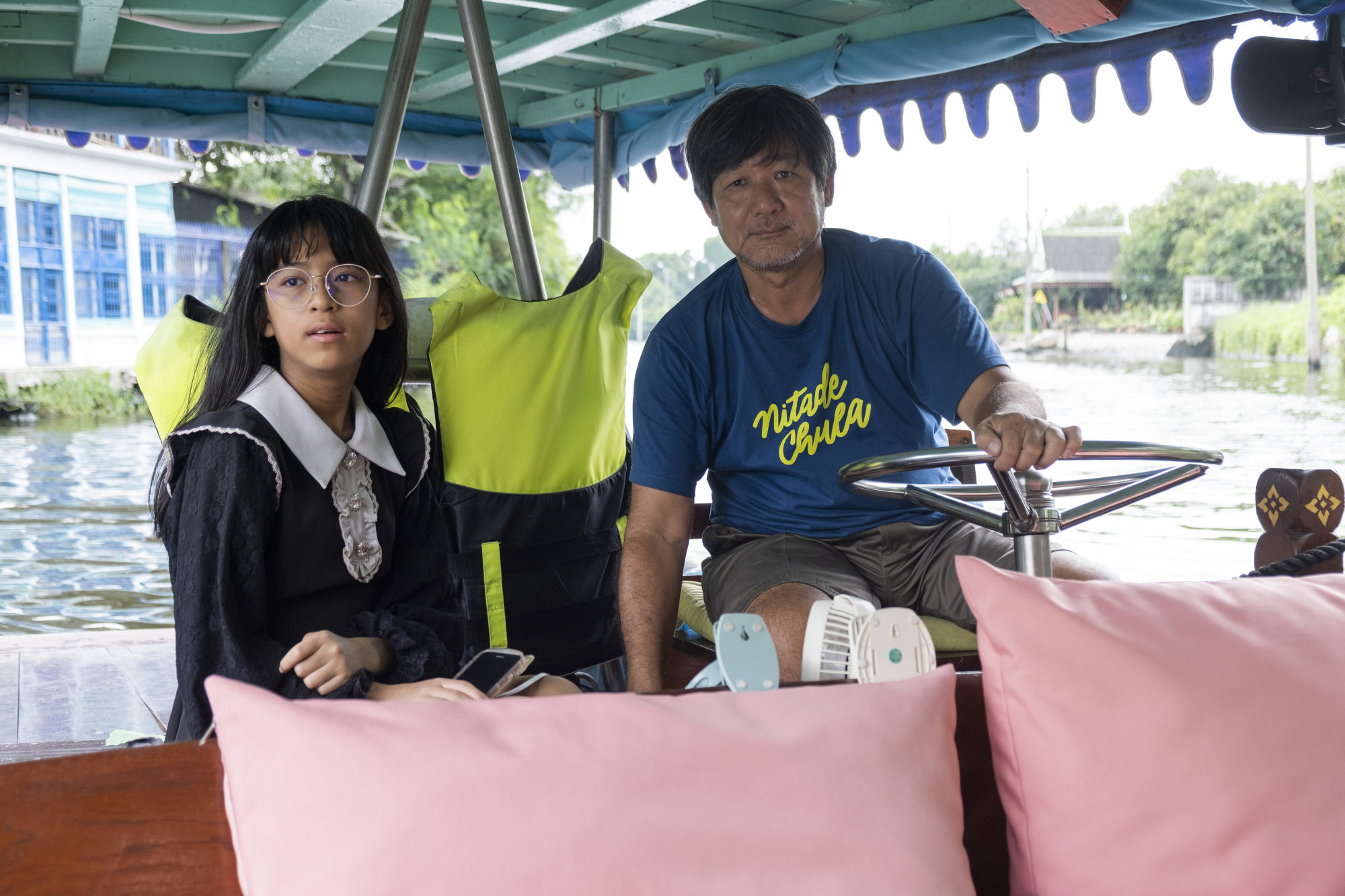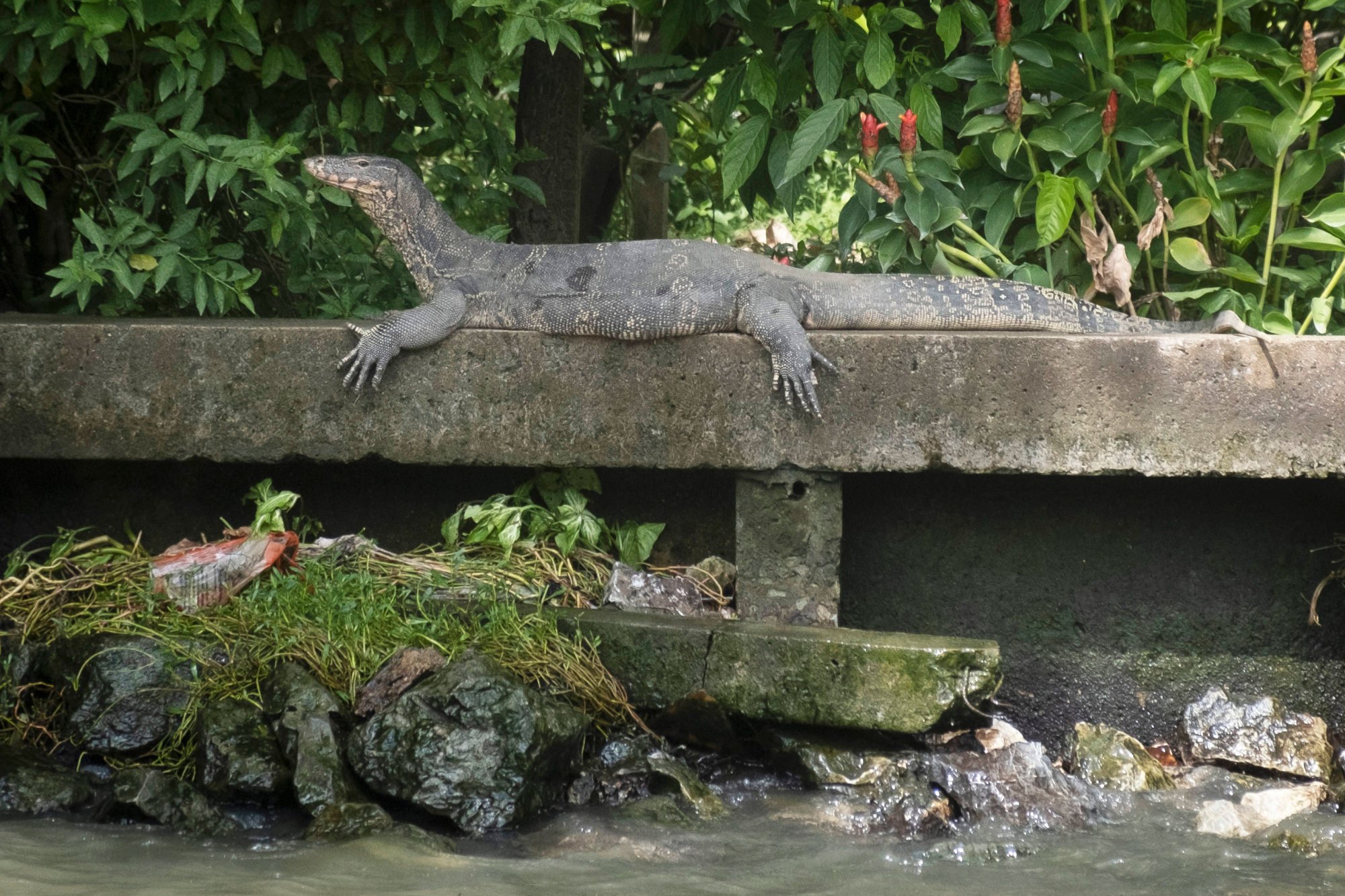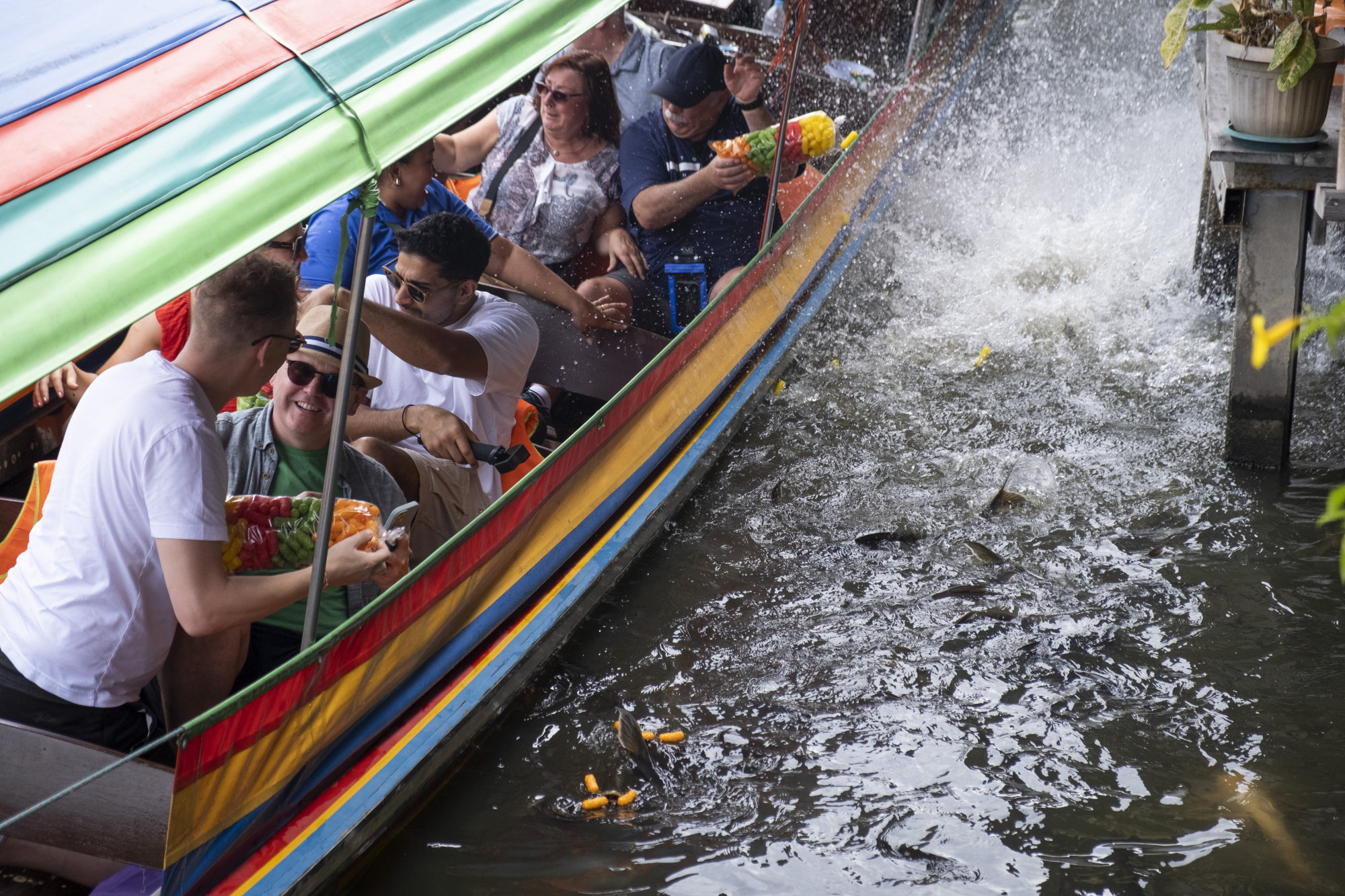And in keeping with the environmentally conscious age, along with a fleet of newly launched electric-powered passenger boats there are a handful of solar-powered ones used by operators providing tours of the city’s waterways.
Mr Tai – who is reluctant to give his full name – runs one such tour, and offers to take me for a jaunt around Bangkok’s Thonburi district, on the west bank of the Chao Phraya River.
On a typically muggy morning, we meet at the pier beside the Wat Kalayanamit temple, where Tai’s boat, the Sol Solar, is moored. Tai is in his late 50s, with the even-keel disposition of a seasoned sailor. Joining us on our outing is his 12-year-old daughter, Yayi.
‘Carbon-intensive holiday’: cruise emissions worse than flying and hotel stay
‘Carbon-intensive holiday’: cruise emissions worse than flying and hotel stay
Our vessel is a typical wooden taxi boat, the type of 10-seater that has plied Bangkok’s canals for decades. But this one is 100 per cent solar-powered, Tai assures me as we clamber aboard and settle on seats beneath a teak roof to which are fixed solar panels.
With Tai at the wheel and Yayi on the cushions beside him, we sail south along Khlong Bangkok Yai (“Big Bangkok Canal”), which dates back to the 16th century and was built to bypass a bend in the Chao Phraya and speed up shipping, Tai says.
At full throttle, the boat can manage 12 knots (22km/h), but this drains the battery faster. As long as the sun remains out, Tai is confident our half-day tour, conducted at a more leisurely eight knots, will not use more than 10 per cent of the battery’s power.
The canals used to be the roads of Bangkok. Most of today’s major roads were once canals that were filled in
A former yachtsman, Tai bought the boat in early 2020, at the start of the coronavirus pandemic, when its previous owner put it up for sale because of the lack of tourists. He spent a year restoring the boat and converting it to run on solar energy.
“I wanted to see if it was possible,” he says.
The Sol Solar incurs minimal maintenance and running costs, and because it is fully electric, pumps no carbon emissions into the city air. It also has the advantage of being much quieter than the standard diesel-powered canal or long-tail boat.

This part of Thonburi is diverse, with Muslim, Buddhist and Thai-Chinese communities living in close proximity. We cruise past a Chinese temple hemmed in by wooden homes, as well as several Buddhist temples.
Tai points out a 100-year-old soy sauce factory, outside of which stand clay pots filled with fermenting soybeans. Soon afterwards, he draws my attention to a rice-processing factory of similar vintage.
Briefly the capital of Thailand, between 1767 and 1782, Thonburi is noticeably less developed than the Bangkok side of the river, with fewer high-rises and shopping malls.

We cruise past wooden stilt houses, with potted ferns or laundry hanging from their roofs, as well as the occasional teak mansion with gables and decorative fretwork, a reminder of the aristocratic families that used to live alongside the canal.
“The canals used to be much wider,” Tai says, pointing to a district office nine metres away which was the former waterfront.
At its peak in the 19th century, Bangkok had around 12,000 canals, says Tai. The earliest were dug as defensive measures, but over time, the network was extended to facilitate trade, irrigation and personal transport.
“The canals used to be the roads of Bangkok,” Tai says. “Most of today’s major roads, like Asoke or Nana, were once canals that were filled in.”

A monitor lizard glides by, showing little urgency in steering clear of our bow. Further along, I catch sight of a lone Croc – the rubber sandal kind, that is.
Bangkok’s canals are heavily polluted, with a smell that is hard to ignore. But this doesn’t detract much from the pleasure of our outing – nor does it stop residents doing their laundry, or even swimming, in the murky water.
An enormous gold-painted seated Buddha comes into view. Completed in 2022, at a cost of US$16 million, the 69-metre (226ft) tall Phra Buddha Dhammakāya Thepmongkhon is the second largest of its kind in the country, and makes a conspicuous addition to the skyline.
Khlong Yai gradually bends northwards, but here we turn into a smaller canal, Khlong Dan, floating past houses seemingly patched together with sheets of plastic, corrugated iron and strips of tarpaulin. Children in matching football shirts fish in its grey-green waters.

From the Wat Ratcha-Oros temple with its Chinese architectural motifs, a family toss fish food into the canal for luck, while the waters below seethe with flashes of silvery catfish.
Slipping under a railway bridge we turn again, charting a course between nipa palms and water hyacinths. We drift past papaya, banana and mango trees, along with the occasional banyan that sifts the waters with its aerial roots.
Greetings are exchanged between captains when we meet another electrically powered boat, this one filled with Thai tourists.
“My friends,” says Tai, as we push on.

They are both part of a small coterie – seven by Tai’s count – of electric-powered-boat enthusiasts.
“Sometimes, we all get together and go out for the day,” says Tai, who describes the experience of cruising around Bangkok’s canals as more cultural than his years of sailing around the seas of southern Thailand.
This part of Thonburi, known as Bang Khun Thian, was, until relatively recently, filled with lychee orchards. Today only one remains, dating back 200 years to the era of King Rama III.
Tai says Bangkok used to be cooler, and that lychee trees require a period of cooler weather if they are to bear fruit (studies have found that average annual temperatures in Thailand have increased by almost one degree Celsius over the past 70 years – a third more than the global average). For this reason, the surviving plantation has not produced a successful harvest in several years.

To make up for this loss the owners have established Poomjai Garden, a cafe and gardens, in the orchard. We stop for a drink and dried mango before making our way back to the rendezvous point, just as the sky threatens rain.
By the time we reach Khlong Yai, the canal is buzzing with traffic. Rainbow-striped long-tail boats tear by, throwing up jets of spume, their prows adorned with marigolds – offerings to the water spirits that safeguard these canals; or, more aptly, peace offerings to atone for the disturbance the engines cause.
The long-tails leave behind an acrid cloud of fumes, while our little boat bounces around in their wake.
I ask Tai what it would take for more boat operators to switch to solar power.
“These boat operators know only diesel,” he says. “Unless the government offers subsidies, it will be hard to convince them.”

There is, at least, growing demand for eco-friendly boat tours and the quieter, more sedate experience they provide. Tai is out on his boat several times a week, chaperoning tour groups, and often has to turn away potential customers.
When we reach the Chao Phraya River, luck is on our side; with water levels aligned on either side of the canal gate, we’re able to slip through without having to join one of the usually lengthy queues.
The River of Kings, as it’s known, is the country’s longest river and the historical lifeline of the city. We skirt Wichai Prasit Fort and Yayi’s school, on the opposite bank, heralded with a groan from the young girl.
Bumping along on choppy tidal waters, our little craft seems out of place among the cruise vessels, express boats and massive freight barges. We make a quick pass of Wat Arun – the Temple of Dawn, with its porcelain-encrusted pagoda, or prang – before turning around and heading back to the pier at Wat Kalayanamit.
Tai secures his boat, and we shake hands. The sky has held and the sun is out. The Sol Solar, one feels, barely broke sweat.







